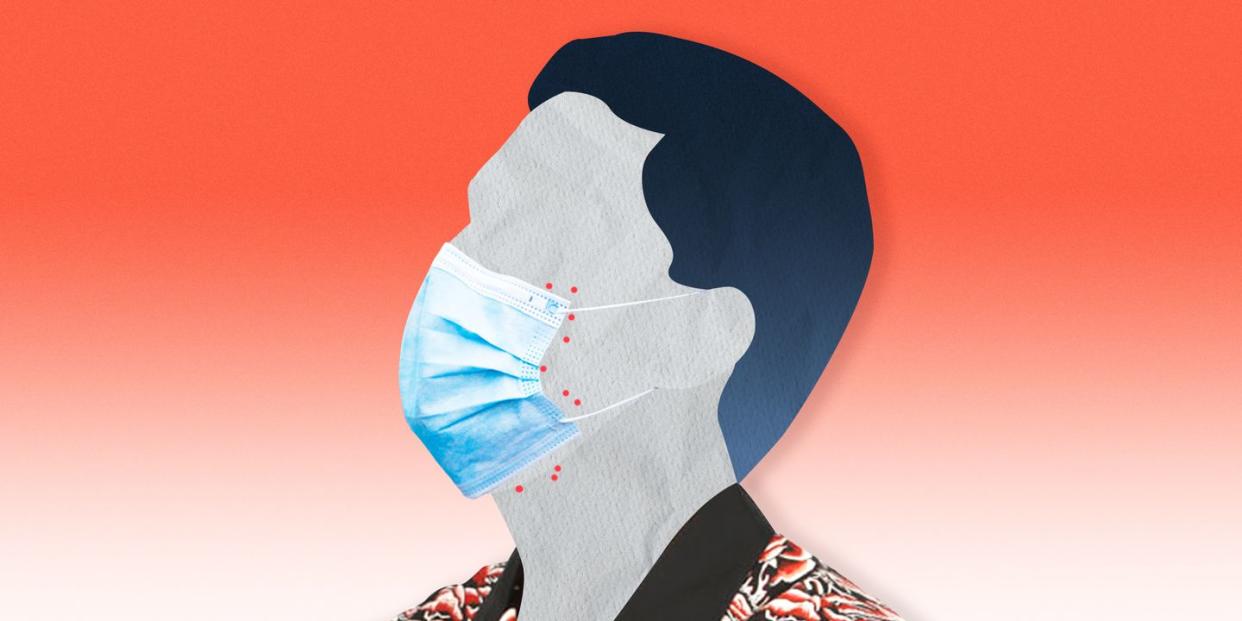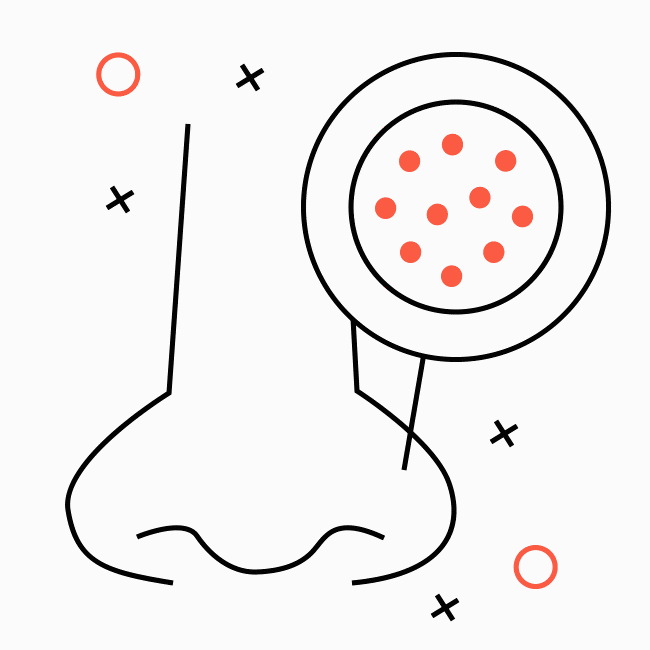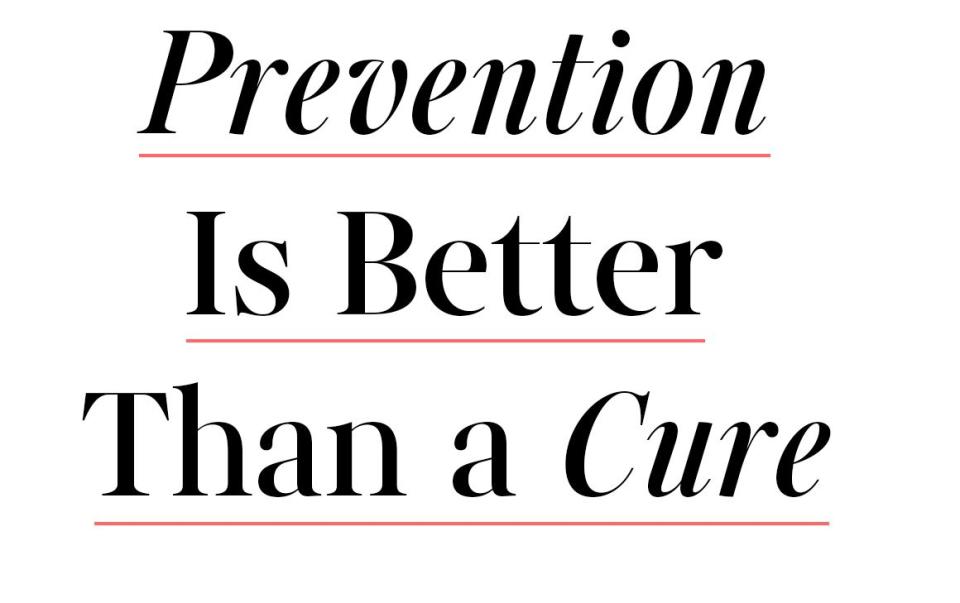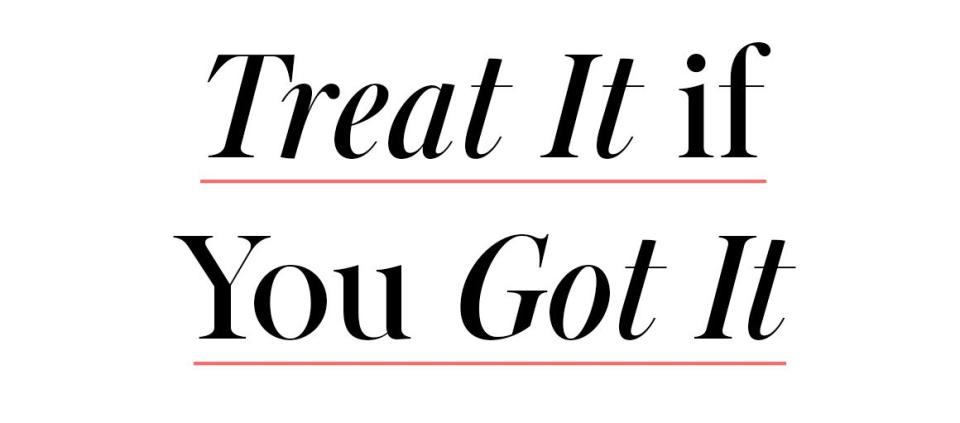So, You Have Maskne. Now What?

Wearing a face mask is one of the best ways to reduce the spread of COVID-19. Medical experts—including the CDC—know it, most politicians admit it, even Sean Hannity (finally) accepts it. And you probably know it too. Wearing a mask in public has become our new normal, and things stand to be that way for a while.
But it’s hard to ignore that wearing a mask comes with some side effects, one of which you may be experiencing yourself: acne. Complaints about pimples, blackheads, rashes, and other skin issues have reached a fever pitch and much of it could be connected to wearing a mask, according to the American Academy of Dermatology. You don’t even have to wear a mask for hours every day to start noticing maskne, though how long you wear one could play a role; one small study in China showed that frontline healthcare workers were especially susceptible to skin issues related to mask-wearing. Nevertheless, just putting on a mask to run to the grocery store or walk your dog could still have an impact on your skin.

This phenomenon isn’t exactly a surprise. “Back when we had the first SARS epidemic, we noticed maskne, dermatitis from masks, and skin breakdown [due to mask-wearing],” says dermatologist Michelle Henry, M.D. The friction between your mask and your skin can cause something called acne mechanica, which is common in people like football players who wear chin straps and helmets for long periods of time. “That friction causes inflammation and irritation which leads to clogged pores—and those clogged pores can lead to deep acne cysts,” she says.
There’s more. Not only does this friction lead to clogged pores, but it could also break down the skin barrier, the microscopic layer of protective oils and fats that protect skin against bacteria as well as keep hydration inside the skin. This can not only make acne worse, but could also cause particular problems in people with dry or sensitive skin and make maskne harder to treat, says dermatologist Robert Finney, M.D. Furthermore, bacteria thrives in a moist, warm environment—like inside a piece of cloth that traps your breath and sweat next to your skin, for instance. As temperatures warm outside, but mask wearing stays essential, it may only make things wetter and hotter which “exacerbates acne,” he says.
All in all, masks are a perfect storm of pimple possibilities, but please, don’t let your zits, or fear of getting them, prevent you from wearing a mask (we repeat: Wear a damn mask). Instead, use a multi-pronged approach. Here’s how to treat the blemishes you have and prevent maskne from popping up in the first place.


To keep that sauna-like environment to a minimum, you may want to change the actual mask you’re wearing. Look for lightweight fabrics that don’t create as much friction against your skin, like cotton, silk or satin. “Wash your mask before you wear it for the first time,” says Dr. Henry, and wash it frequently to cut down on the amount of dirt and bacteria that can linger on the fabric (and then get transferred to your face). Better yet, invest in multiple masks, she says.


“If you’re acne-prone, you need to be washing your face twice a day,” says Dr. Finney. Using a face wash that contains acne-fighting salicylic acid or antibacterial benzoyl peroxide will help keep pores clean even if you’re wearing a mask often. Those ingredients can potentially cause irritation, so Dr. Finney recommends a sulfur wash if a more traditional acne wash dries out your skin. For the record, washing twice a day is enough for most people. “People start washing their face three or four times a day [when they’re worried about breakouts],” says Dr. Henry. “Then their skin gets really inflamed and angry and they’re worse off.”

“When protecting your skin from a mask, you want to create a barrier,” says Dr. Henry, both between your skin and the mask and between your skin and the moisture that builds inside while you wear it. The best way to do this is with a “nice, rich moisturizer that has ingredients like hyaluronic acid and ceramides, which are critical to protecting the skin,” she advises. Also make sure your moisturizer is non-comedogenic, which means it won’t clog pores and cause breakouts. Apply your moisturizer morning and night and more often if you think the skin under your mask feels dry or irritated.

“Avoid oil-containing products which are occlusive and can make you sweat quicker,” advises Dr. Finney. Heavy products and sweat can make matters worse when left under a mask. Look for moisturizers that are lightweight and oil-free and mineral sunscreens (yes, you still need to wear sunscreen). “Mineral sunscreens are less likely to cause inflammation because they have zinc in them and zinc is naturally anti-inflammatory,” says Dr. Henry.

If you’re already using a lot of skincare products with active ingredients, you may want to cool it a bit. Don’t use anything “that’s going to violate the skin or compromise the skin barrier,” advises Dr. Henry. You should still exfoliate regularly, for instance, but instead of using a harsh scrub, switch to a gentle glycolic acid toner. “Glycolic acid is going to unclog pores, but it’s also a humectant, so it draws water into the skin,” she says. “It’s all about finding smart ingredients that won’t cause inflammation.” At least for the time being, switch to skincare with the primary goal is to soothe and hydrate.


Your classic spot treatments like benzoyl peroxide and salicylic acid are still your best bet in treating existing pimples, but when it comes to maskne, come with a disclaimer. “Especially if the spot treatment is applied where the mask is rubbing, it will likely intensify the effects of the medicine” which can lead to even more irritation and inflammation, says Dr. Finney. He recommends using them only at night or try a hydrocolloid pimple patch instead. “The patches can be helpful because they’re built to suck out the moisture and the junk that’s in the pores and some of them are combined with salicylic acid to help loosen up the dead skin cells as well.” In addition, they provide protection against more rubbing between the mask and the pimple—something other spot treatments don’t do. Bonus: No one can see the patch under your mask.

“Whenever we hear ‘acne,’ our inclination is to be really aggressive because we want it gone,” says Dr. Henry. But with maskne, when your skin barrier is likely compromised, that’s the worst thing you could do. Instead, look for low concentrations of salicylic acid and benzoyl peroxide, which won’t cause as much irritation. “When we compromise the skin, we get more inflammation, and more inflammation is going to lead to more acne,” she says.

Retinol is the go-to acne fighting ingredient dermatologists have turned to for years and while it can be irritating, Dr. Henry says you can still use it on maskne if you do it properly. “You want to mitigate any potential redness and inflammation,” she explains. “So do the sandwich method: layer moisturizer, then retinol, then moisturizer to dilute it a bit.” Start with a low concentration of a gentle retinol and use it every other night to see how your skin reacts. And since retinol can make your skin sensitive to sunlight, only use it at night and always wear sunscreen during the day (yes, even if you’re wearing a mask). And if you’re using an additional spot treatment, alternate nights or use it in the morning and keep your retinol for nighttime.

If you’re doing all of this and aren’t seeing any improvement in your acne, particularly when you get those deep, throbbing cystic suckers, make an appointment with a dermatologist. “We can give you stronger treatments like topical antibiotics that will help the inflammation,” says Dr. Henry. “Cysts can be difficult to treat, but don’t wait too long.”
You Might Also Like

